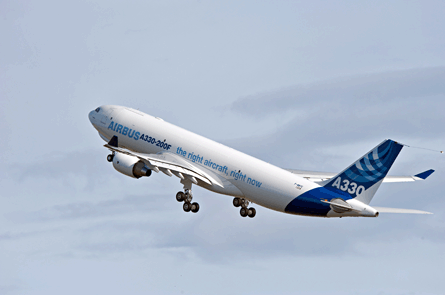Airbus believes that the increasing cost of fuel will help draw demand for its A330-200 Freighter from operators of McDonnell Douglas DC-10Fs, a target replacement market for the new cargo widebody.
The airframer's freighter marketing manager Jonathan Lesieur concedes that in a low fuel-cost environment the $190 million, 70t payload A330-200F was a hard sell as a DC-10F replacement, but the picture is changing as oil prices rise and cargo yields become more challenging.
"When fuel was at $1 a US gallon, it wasn't that easy for A330-200F's lower operating costs to compensate its higher acquisition costs compared with a DC-10F, which is approximately the same size in terms of payload," he says.
 |
|---|
© H. Gousse/Airbus |
However, Lesieur says as fuel prices rise with no clear idea where they will end up, the A330's lower fuel burn and associated operating cost savings over the three-crew, DC-10 trijet are making it a much more attractive proposition.
"When fuel was at $1 per US gallon [26¢/litre] it required an annual utilisation of 4,000h for the A330-200F's higher capital costs to be offset by its lower operating costs over a DC-10F," he says. "But now when fuel is at around $2.50/$3 per US gallon, this utilisation is halved to 2,000h."
Flightglobal's ACAS database lists around 90 DC-10Fs in service, with eight operators. The largest of these is US express package carrier FedEx Express with 66 aircraft, but Airbus is pitching the A330-200F more at general cargo operators, says Lesieur. "A lot of these DC-10 operators easily do 2,000h a year," he adds.
The express package carriers, which generally have lower cargo densities and a greater focus on volume rather than payload/range capability, are a target of the proposed passenger-to-freighter conversion of the larger A330-300. "This could carry 26 containers on the maindeck," says Lesieur.
Source: Flight International
















